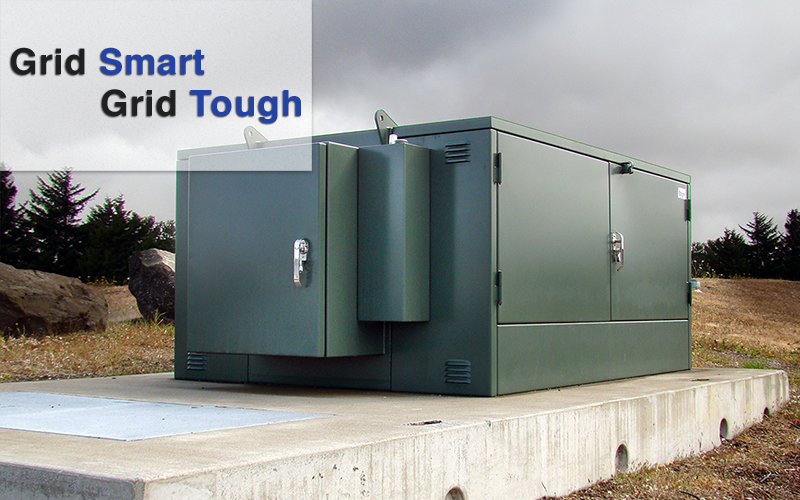Trayer Storm Hardened Switchgear
Trayer Storm Hardened Switchgear
Every year, utilities face the potential for down time, equipment loss, and overcurrent hazards as severe storms pose a challenge for a dated grid. Hurricanes, floods, heavy snow, and even fertilizers pose a physical threat to equipment.
“Storm hardening” involves a series of design features developed in order to safeguard the equipment against the dangers of environmental degradation, whether it be from corrosion, total submersion, high winds, or environmental concerns such as animals. A critical feature of well-designed equipment is ease of use for operators. Equipment must be designed to provide maximum visibility and safety in hazardous conditions.
Five Reasons to Purchase Trayer Switchgear
- Corrosion Resistance—under hazardous conditions, mechanical degradation caused by corrosion can cause a unit to fail. Under “normal” conditions, ordinary mild steel, even if painted, will corrode and fail. It cannot stand up to exposure to chemical attack, whether from the sea or even fertilizers from agricultural use or domestic lawn sprinkler runoff. Trayer uses type 304 surgical stainless steel, an Austenitic alloy containing 18-20% chromium and 8-10% nickel, because of its superior corrosion resistance
- Welded Seam Construction and Hermetically Sealed Cavity—welded seams provide greater integrity than bolted enclosures that are susceptible to water and particulate ingress through leakage as the equipment ages. Trayer’s hermetic sealed tanks prevent the loss of insulating mediums such as liquid and gas. Our sealed cavities will meet an IP68 rating for solids and liquids.
- Functional Submersibility—even if a welded tank is able to survive a storm surge or heavy winds, mechanical and electrical components such as controls are at risk of losing their functionality, rendering an entire unit, and even grid, obsolete. Trayer builds componentry, such as SCADA controls and motor operators, to survive adverse conditions.
- Robust Electrical Design—critical internal components, such as switches and interrupters, must be able to survive multiple concurrent fault and overcurrent conditions, such as those present in storms and natural disasters. Trayer’s vacuum bottle technology greatly reduces and eliminates the risk of catastrophic failure.
- Ease of Operation—protecting the lives and wellbeing of the line crew operating high voltage equipment is crucial to the design of switchgear. While working in low visibility or adverse weather conditions, it is important that equipment is clearly labeled, easy to operate and built with safety features such as visible disconnects which allow for a visual indication as to the status of the unit.
Trayer’s Storm Hardened Switchgear Brochure (pdf)
NOAA’s new Pacific Fleet Headquarters Case Study (pdf)
Share




